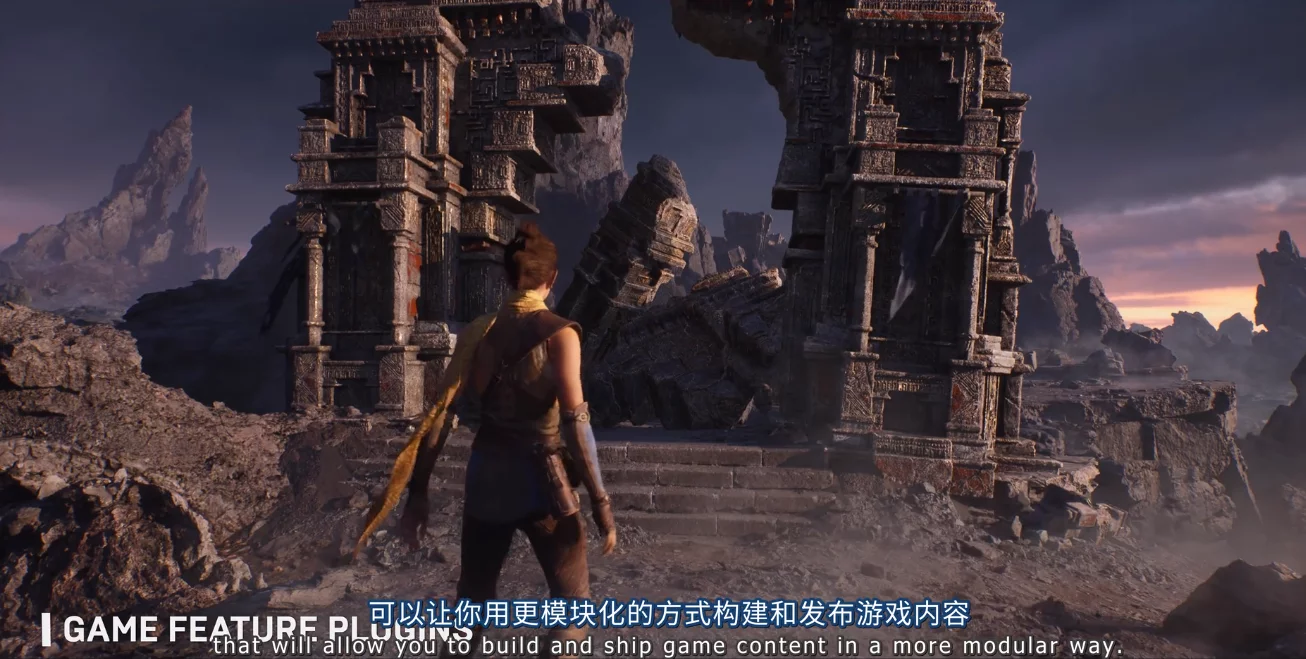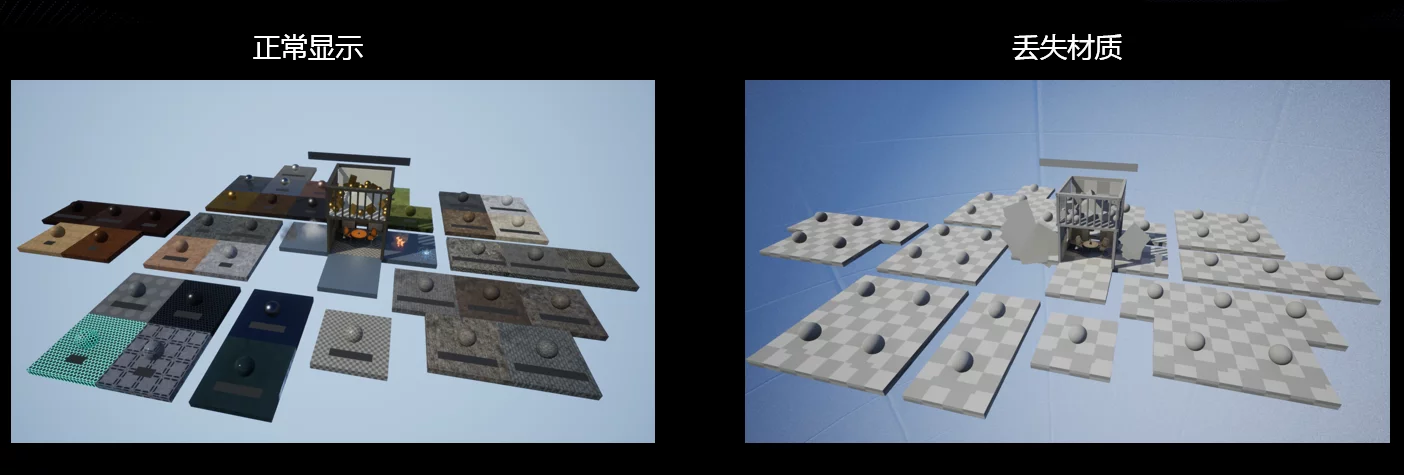Recently, I checked the access data of the blog Google Analysic, and through traffic analysis, I found some very interesting points that can reflect, to some extent, the user characteristics in game development using Unreal Engine. The data sample in this article is the access traffic from our site for the week of 2021.11.14-2021.11.20. The overall data amount is limited and may not truly reflect real trends, only for reference.
UE5: Game Feature Tech Preview
Symbols count in article: 8.7k Reading time ≈ 22 mins.

The preview video for UE5 introduces a modular development mechanism for GamePlay, similar to mod-style development and management of game features and resources, referred to as “Game Feature”. This has already been enabled in UE4.27 and UE5. I think this new modular gameplay format is great, so I’ve conducted a technical research.
This article introduces the activation process and operational mechanism of Game Features, and at the end shares a demo based on Game Features. Additionally, I implemented a mechanism in HotPatcher that allows features to be packaged independently; Game Features do not need to be pre-packaged into the base package and can be downloaded and loaded on demand during runtime, achieving true modular loading.
Currently, the UE5 EA version still has some imperfections, and related content will be supplemented as the engine updates.
Open Source an Unreal Engine launcher Project:UE Launcher

Usually, when developing projects using UE, there are multiple engine versions locally, and the Epic Game Launcher only supports launching installed engine versions and does not support source-compiled engines. When there are multiple engine versions locally, switching becomes inconvenient, and there is no streamlined tool to launch the engine, projects, and add launch parameters easily. When executing Commandlet, it requires creating many scripts, making management very cumbersome. Based on these pain points, I developed a UE launcher: UELauncher, to solve these issues, supporting both UE4 and UE5.
Automated Resource Scanning and Inspection with ResScannerUE

For the resource inspection requirements in the project, it needs to be simple and convenient to configure, automate execution, and be able to promptly locate related personnel. Based on this requirement, I have open-sourced a resource compliance scanning tool ResScannerUE, with configuration documentation: UE Resource Compliance Inspection Tool ResScannerUE.
This article will introduce how to achieve automated resource scanning through this tool, provide support for incremental detection combined with Git, use Commandlet to automatically trigger and execute detection rules for Content content changes on CI platforms, and be able to locate the most recent committers of problematic resources, achieving precise positioning and real-time scanning report sending to corporate WeChat, reminding relevant personnel to take action.
Additionally, I also provide a Git-based Pre-Commit Hook implementation, allowing detection of non-compliant resources before submitting and prohibiting the submission, thus avoiding the contamination of remote repositories with problematic resources. The overall solution has been meticulously designed and extensively optimized for experience and enhanced automation support, making it very convenient to configure and integrate, capable of meeting various resource scanning needs.
Details Panel Customization in Unreal Engine
Symbols count in article: 8.4k Reading time ≈ 21 mins.

When developing editor plugins in UE, it is very convenient to automatically create property panels using the reflection information of USTRUCT, providing a configurable way, but there are often special customization requirements for the property panels, such as providing special panel options, displaying different types of values based on parameters, etc. The property panels in UE are applied in HotPatcher and ResScannerUE, which can conveniently configure and customize plugins. The official documentation from UE: Details Panel Customization.
This article starts with creating an independent Details panel, and through specific cases in ResScannerUE, provides implementation methods for customizing property panels and property items.
UE Hot Update: Config Overloading and Apply

In the UE engine, a large number of configurations are set and controlled using ini files. For projects, understanding which of these can be updated can help establish rules for updating the project. Moreover, many functionalities in UE are realized through configurations and dynamic switches, such as CVars, as well as Device Profiles settings for specific platforms or devices, which can similarly implement dynamic dispatch and application of configurations during hot updates.
This article analyzes the loading process of ini config from the engine mechanism, how different config modules are reloaded after hot updates, and how to apply them in projects, focusing on the runtime modification and reapplication of parameters in the engine or project based on ini configuration hot updates, enhancing the ability to update games.
UE Resource Scanning and inspection tool ResScannerUE

In game project development, due to the large amount of resources involved and the broad range of personnel, it’s relatively difficult to consciously unify resource standards. If issues arise with the resources, manually checking them requires a significant amount of manpower. This highlights the risks and pain points in resource management.
Based on this demand, I developed a resource scanning standard tool under the editor, ResScannerUE, which allows for easy configuration of rules and automation. This can be executed by artists before submitting resources or on a regular basis to check whether the resources in the project comply, thus avoiding issues that may only be discovered after packaging.
This article introduces the usage methods, operational mechanisms, ways to extend custom rules, and future optimization arrangements for the ResScannerUE plugin.
UE Hot Update: Shader update strategy
In some previous articles, the issue of UE hot updates missing shaders and using default materials has been introduced, along with a Shader Patch solution. For details, please refer to the articles:
- UE Hot Update: Create Shader Patch
- [UE Hot Update: Questions & Answers#Hot Update Resources Not Working / Material Missing](https://imzlp.com/posts/16895/#Hot Update Resources Not Working-Material Missing).

The fundamental reason for the runtime loss of materials is that the shaders dependent on newly added or modified resources were not packaged, leading to reading failures at runtime. This article will introduce the strategy and pros and cons of shader updates, analyze the mechanisms within the engine, and provide an optimized solution that combines the advantages of Shader Patch and Inline Shader Code, which has been implemented in HotPatcher.
UE Hot Update: binary patch solution for resources

A series of articles has been introduced regarding the engineering practices of hot updates in UE, capable of achieving version comparison and differential updates based on resources from the original project. However, by default, resource updates depend on file updates; if a resource changes, the entire file must be repackaged. In UE, resource changes after Cook do not cause the entire file to be updated; only certain bytes are modified during serialization. In this case, a file-based patch mechanism can significantly reduce the size of the patch. This article outlines the generation and loading scheme of binary patches based on HotPatcher, allowing for easy generation of binary patches.
To fulfill this requirement, I have ported HDiffPatch to UE and used it as the default DIFF/PATCH algorithm for binary differential patches in HotPatcher; it can also easily extend other algorithms based on the Modular Feature approach.
UE as Lib

UE4.27 has introduced a new mechanism that allows UE to be compiled into a library, enabling it to be embedded in external programs, which can then drive the engine’s execution and message communication. However, the official documentation has not yet been released. I analyzed the relevant code in the engine and proposed a practical solution for UE as Lib, which can theoretically be implemented in engine versions before 4.27, although it may be inconsistent with the official documentation released later. The related research content will also be continuously updated in this article.